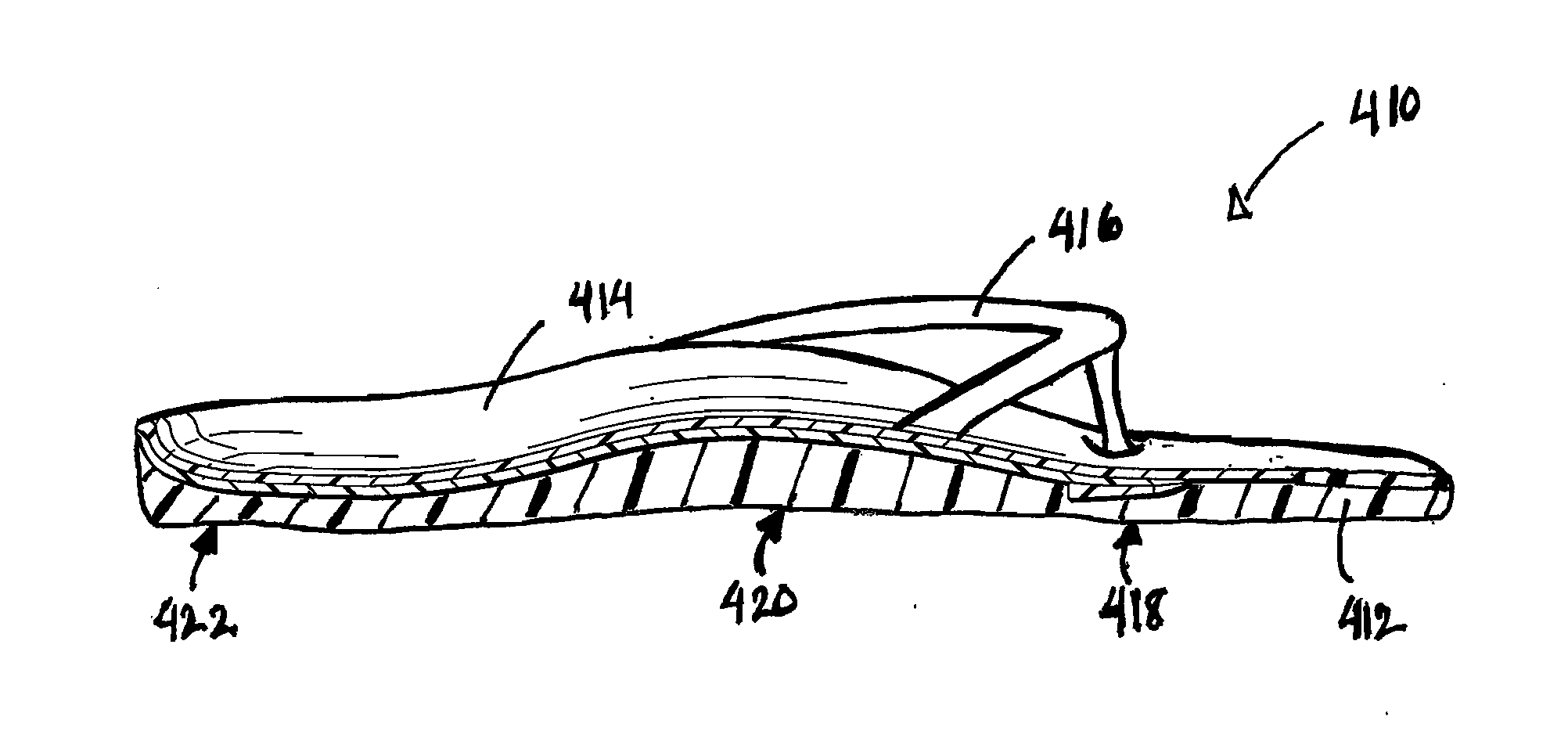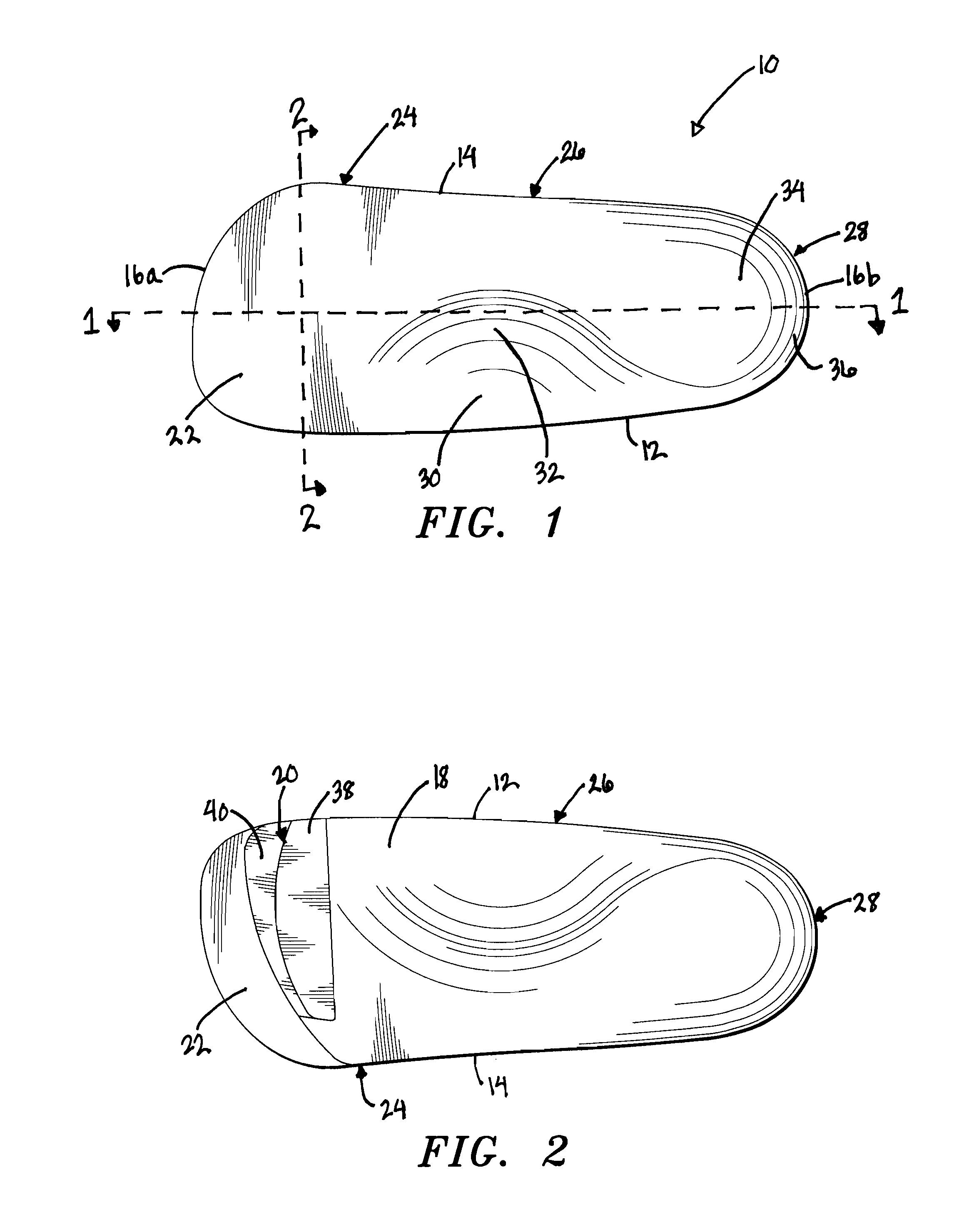Foot support
a foot support and foot technology, applied in the field of foot support, can solve the problems of increasing the strain placed on the ligaments, muscles, tendons and bones of the whole body, and causing pain in the foot, legs, knees, back, or neck, and causing pain in the knee, hip, or back, etc., to achieve the effect of reducing the risk of injury
- Summary
- Abstract
- Description
- Claims
- Application Information
AI Technical Summary
Problems solved by technology
Method used
Image
Examples
Embodiment Construction
[0024]With reference to FIGS. 1 and 2, the foot support for a human foot 10 is shown. Foot support 10 is generally oblong shaped having a medial edge 12, a lateral edge 14, and a pair of rounded ends 16a and 16b. In the preferred embodiment, the foot support comprises insole 18, wedge 20, and cover 22. Insole 18 and cover 22 comprise forefoot portion 24, midfoot portion 26, and heel portion 28. Insole 18 is made of a rigid material capable of retaining its shape under compressive forces. Cover 22 is seamless and made of a compressible foam material. Cover 22 extends past insole 18 to provide a smooth transition from the forefoot, which is supported by forefoot portion 24 of foot support 10, to the toes, which are unsupported by foot support 10, during toe off. Midfoot portion 26 extends between forefoot portion 24 and heel portion 28 and varies in width between 30 mm and 120 mm.
[0025]With reference to FIGS. 1 and 3, a longitudinal arch 30 begins at the distal end of heel portion 28,...
PUM
| Property | Measurement | Unit |
|---|---|---|
| Angle | aaaaa | aaaaa |
| Angle | aaaaa | aaaaa |
| Angle | aaaaa | aaaaa |
Abstract
Description
Claims
Application Information
 Login to View More
Login to View More - R&D
- Intellectual Property
- Life Sciences
- Materials
- Tech Scout
- Unparalleled Data Quality
- Higher Quality Content
- 60% Fewer Hallucinations
Browse by: Latest US Patents, China's latest patents, Technical Efficacy Thesaurus, Application Domain, Technology Topic, Popular Technical Reports.
© 2025 PatSnap. All rights reserved.Legal|Privacy policy|Modern Slavery Act Transparency Statement|Sitemap|About US| Contact US: help@patsnap.com



